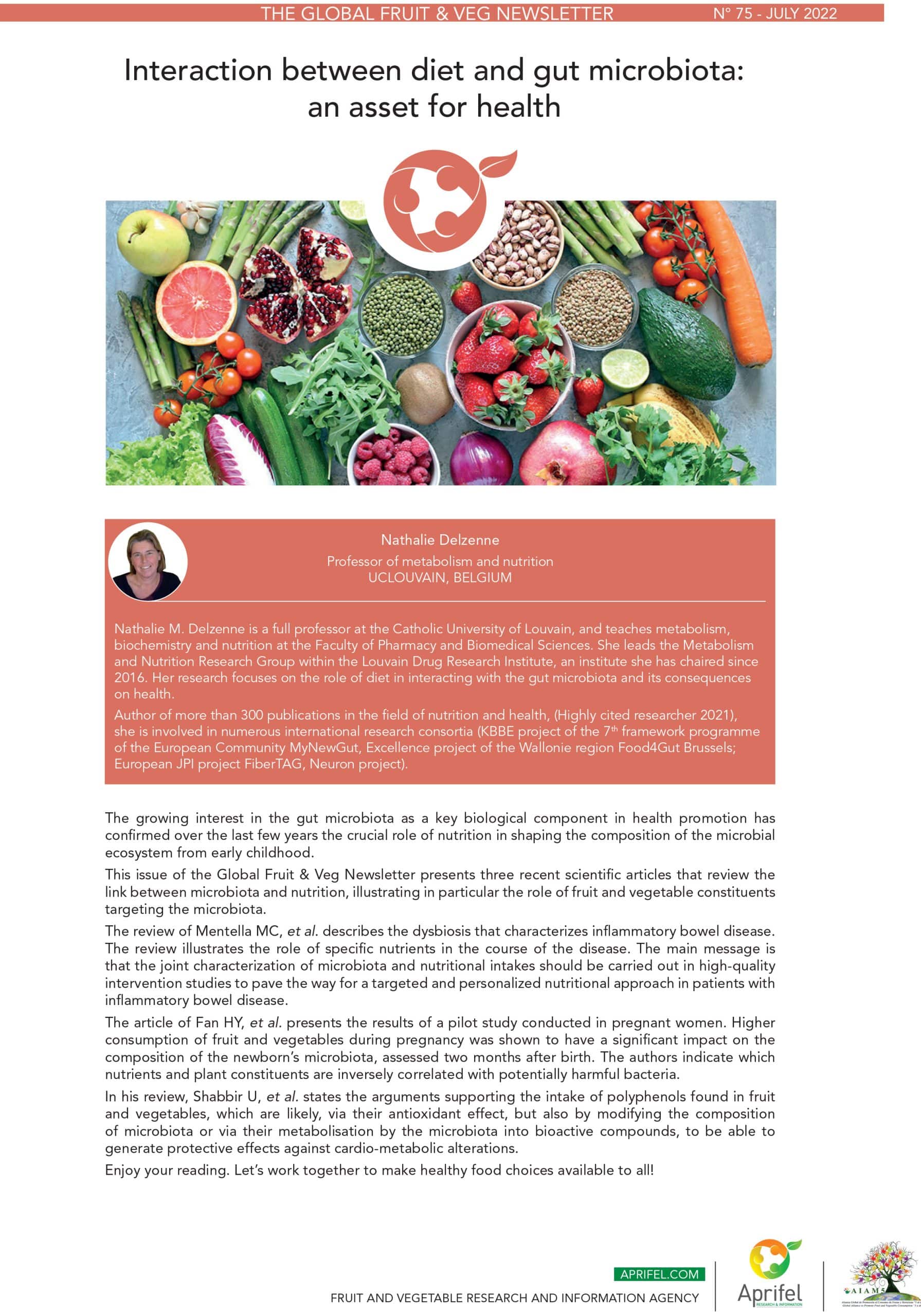Polyphenols, gut microbiota, and metabolic diseases
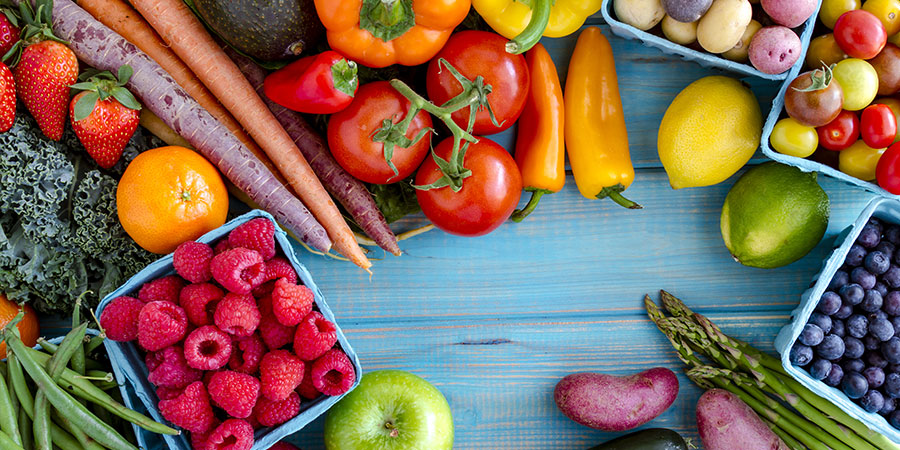
Plant polyphenols are secondary metabolites and a class of non-essential phytonutrients, ubiquitously found in various parts of plants (roots, stems, leaves, flowers, pulp) and abundant mainly in fruit, vegetables, and cereals (Ma, 2020; Rubab, 2020). Their role is vital in human nutrition as they have antioxidant ability and can decrease the reactive oxygen species (ROS) and can be used to improve metabolic disorders such as obesity, diabetes, cancer, and cardiometabolic diseases (Maurya, 2020). Although 90-95% of plant polyphenols are absorbed in the colon, their efficacy (in terms of therapeutic effects) is about 15-20% (Brglez, 2016).
The present review discusses the effect of plant polyphenols in general, with a focus on specific types of polyphenols found in fruit and vegetables, on the composition of gut microbiota that leads to improving overall gut health and improving metabolic disorders.
Gut microbiota and plant polyphenols: a complex and dynamic interplay
According to studies, plant polyphenols and gut microbiota have a dynamic and complex interplay during metabolism contributing to the overall health of individuals (Jamar, 2017).
The retention of plant polyphenols in intestines can promote beneficial effects on gut microbiota. In fact, studies have revealed that plant polyphenols can modulate the colony of gut microbiota by using antimicrobial activity or prebiotic-like effect against harmful gut bacteria (Ozdal, 2016).
On the other hand, gut microbiota enhances the biological activity of plant polyphenols by transforming them into active metabolites (phenolics). Variations in gut microbiota composition are also documented to affect the bioavailability and bioactive effect of plant polyphenols and their metabolites (Espin, 2017).
Figure 1 illustrates major sources of plant polyphanols and their potential health benefits associated with gut microbiota in humans.
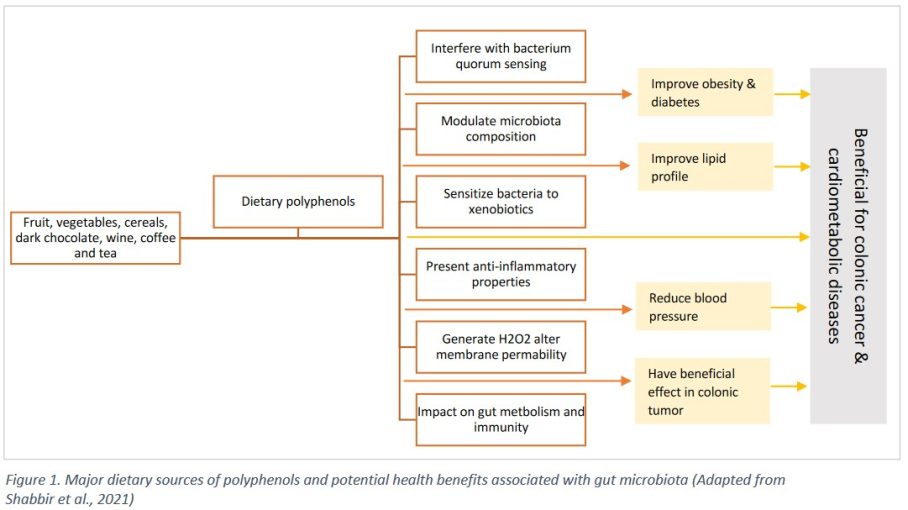
Biotransformation of specific polyphenols found in fruit and vegetables and their effects on human gut
1. Quercetin and gut health
One of the most common flavonoids present in consumer foods, quercetin belongs to the family of flavonoids. It is commonly found in green tea, lettuce, radish leaves, cranberry, apple, onion, coriander, lovage, buckwheat, etc. Quercetin generally acts as a pigment and gives color to numerous fruit and vegetables (Ulusoy, 2020).
About 65-81% of quecertin goes to the liver where it is metabolized and becomes bioavailable (Bischoff, 2008). Complex metabolic reactions in the small intestine and stomach make it bioavailable at less than 10%. Quercetin is transformed into its active metabolites by gut microbiota, mainly by Bacteroides fragilis, Eubacteriumnramulus, and C. perfringens (Figure 2).
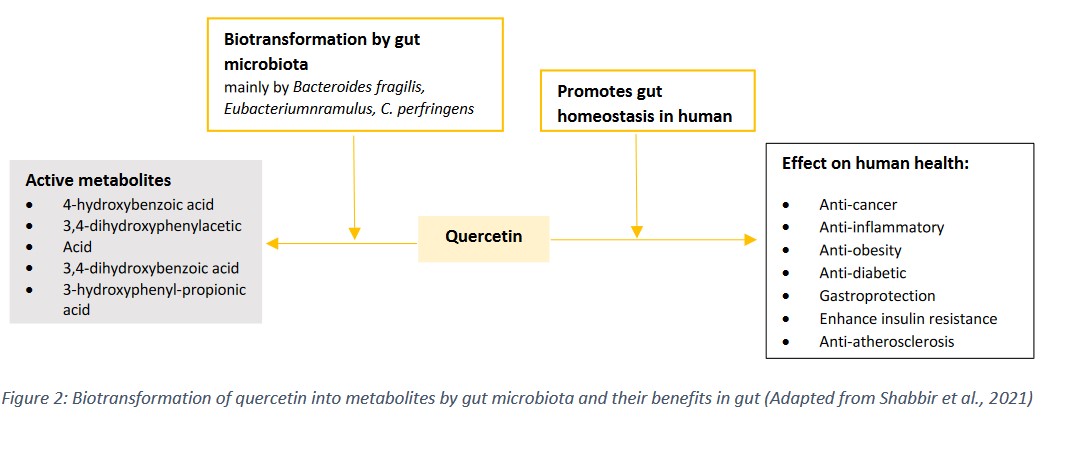
2. Catechins and gut health
Catechins are widely found in many foods and herbs (e.g., tea, cacaos apple, persimmons, berries, and grapes). Catechins include epigallocatechin-3-gallate (most abundant and biologically active), epigallocatechin, epicatechin, epicatechin-3-gallate, gallocatechin gallate, and gallocatechin (Khan, 2019).
Once ingested, catechins pass through the small intestine and reach the colon, where they are metabolized from microflora which makes the gut microbiota essential for their biotransformation into their metabolites (Clifford, 2013). Eggerthella lenta and Flavonifractor plautii are mainly responsible for the biotransformation of dietary catechins (Figure 3).
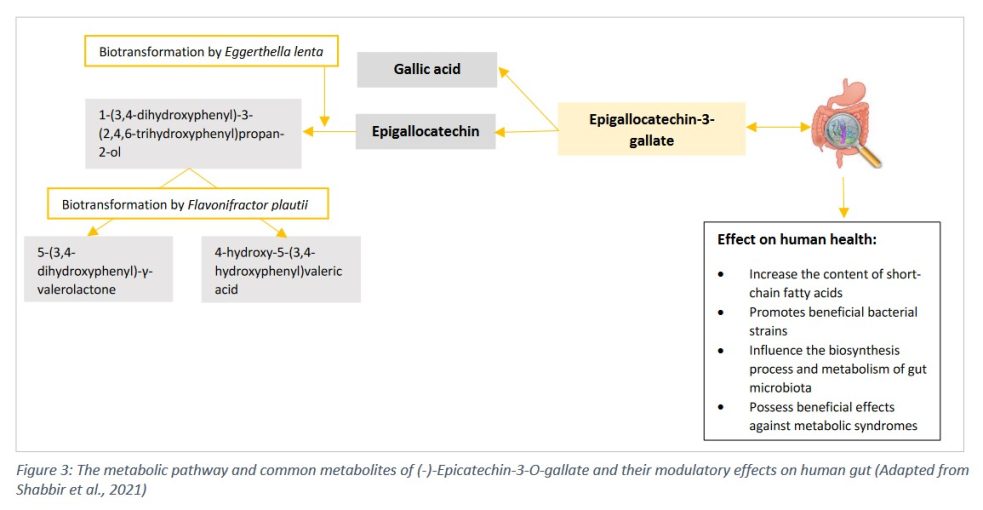
Based on: Shabbir U, et al. Curcumin, Quercetin, Catechins and Metabolic Diseases: The Role of Gut Microbiota. Nutrients. 2021 Jan 12;13(1):206.
- Due to their antioxidative ability, plant polyphenols are known as promising candidates that can prevent and combat several metabolic syndromes.
- As their metabolism occurs in the intestine, retention of plant polyphenols for a long time can promote beneficial effect on gut microbiota.
- In parallel, gut microbiota enhances the biological activity of polyphenols by transforming them into active metabolites that help improving the overall gut health and metabolic disorders.
